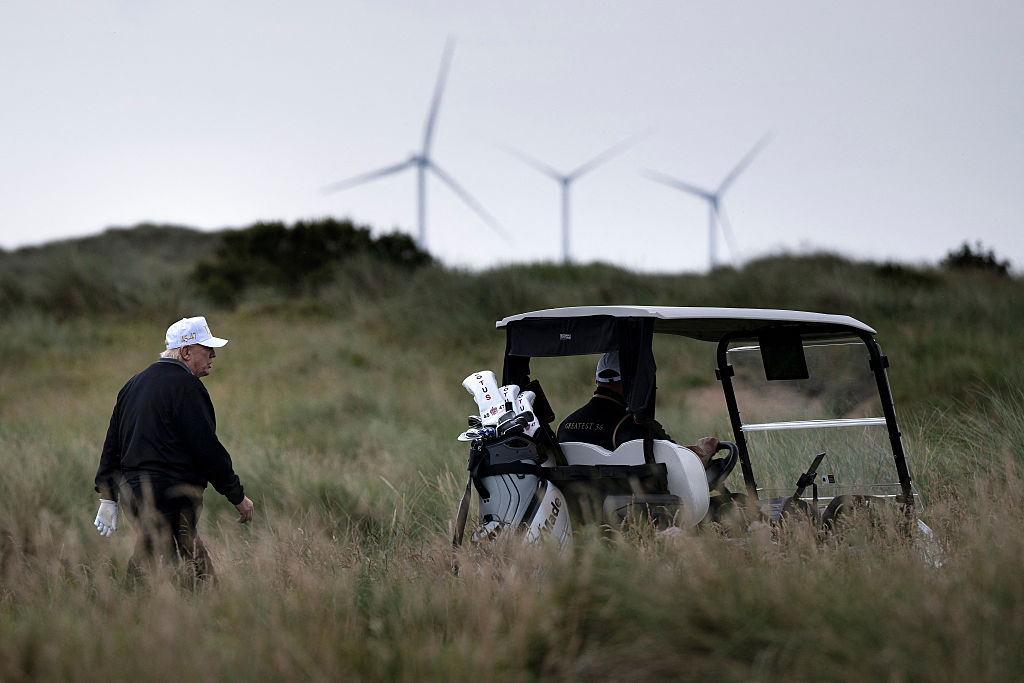The Trump Administration filed plans this week to cancel the approval for two large wind farm projects off the coast of New England. With an estimated value of nearly $15 billion, the project was a big win for the region—and offered a useful source of new electricity in a time of growing demand.
[time-brightcove not-tgx=”true”]
Trump’s move was the latest in a string of attacks on the American wind industry. At a quick glance, it’s easy to view this primarily as an attack on clean energy and efforts to tackle climate change—and, of course, that is a big part of the picture.
But, if we step outside the climate bubble a bit, the full-throated push against wind is more than an anti-climate move. By targeting investments that are already in train and in some cases close to completed, Trump’s move strikes against the core of the free market and private enterprise. While past administrations have certainly changed subsidies and tightened or loosened regulatory requirements, targeting projects with active construction represents an unprecedented level of regulatory uncertainty that threatens the foundation of how major infrastructure gets built in America and puts government whims in the driver’s seat.
In climate and energy circles these days, it’s taken as almost a given that wind power has become the ugly duckling of clean energy even as other renewable sources face bright futures despite a hostile administration. Indeed, economics and the growing demand for energy should continue to create opportunities for solar power and battery storage. But the speed and scale of the attempt to diminish wind power should underscore that nothing is safe.
Trump’s anti-wind posture originates long before he took office for the second time in January. In his real estate developer days, he complained that wind turbines off the coast of Scotland were hurting business at his seaside golf course. And over the last decade he has offered tirade after tirade condemning the power sources for everything from killing birds to simply being ugly. In other words, whatever policy justifications the administration may offer, the opposition is at least in part personal.
In Trump’s first term, the administration pushed to prop up coal and derail renewables with mixed success and commitment. But this time around has been different. In the first days of his new term, Trump’s administration paused new permits for offshore wind power and began a review of existing leases of federal land for wind development. Since then, the administration has slashed clean energy tax credits, imposed tariffs on parts of the wind supply chain, and, with few details, launched a national security investigation on offshore wind.
Most striking and unprecedented has been the attack on projects already permitted or already actively under construction. The projects targeted this week—New England Wind 1 and 2—received permits last year. The company building the Revolution Wind project, which is around 80% completed, received a stop work order in August with the administration citing “national security” concerns. Earlier this year, the administration temporarily halted construction on Empire Wind, another mega-project off the coast of New York. The White House allowed construction to resume after the state’s governor approved a new natural gas pipeline. In all of these cases, billions of dollars of private funding are on the line—investments that have been carefully calculated under the assumption of a consistent legal framework.
“Permitted energy projects of any type shouldn’t be halted at such a late stage,” Martin Durbin, senior vice president of policy at the U.S. Chamber of Commerce, wrote in a Sept. 3 blog post. “Revoking wind permits today opens the door to uncertainty for all types of energy projects in the future.”
It’s a telling warning coming from the U.S. Chamber of Commerce, a business lobby group with historic ties to the GOP. Trump’s wind agenda is a message to anyone making a big capital investment: the success of your project may depend on Trump’s favor. Under these conditions, it will be hard not only to invest in the energy transition at scale but also to build a whole lot of necessary infrastructure that requires large investment—hampering efforts to tackle climate change and foster economic growth.
To get this story in your inbox, subscribe to the TIME CO2 Leadership Report newsletter here.

